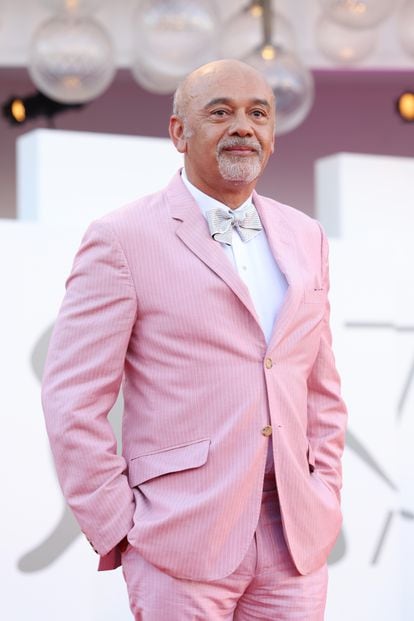RIP the high heel.
The court shoe. The three-inch velvet heel. The killer boot.
Gone. And replaced, it seems, with outrageously expensive flat shoes more suited to a game of tennis than a catwalk strut.
Does this perturb anyone else? Or is it just us 50-year-olds with a cupboard full of them, and a determination to own our place, who are bucking a trend that has now swept the world?
Our daughters will rue the day they said goodbye to an invention that has outlasted others for centuries and centuries.
Providing style and height in equal measure, the high heel became so ubiquitous that it is really difficult to even get a footing on when and where it first appeared.
Ancient Egyptian butlers? European courtiers in the 16th century? Or in Persia, 600 years earlier, when the upper class took a liking to a few inches extra in height.
Throughout the ages they’ve been worn by men too, perhaps most notably by King Louis XIV of France. All in the name of fashion.
And they heralded a more modern approach than the platform shoe they replaced – some of them were as high as 60 centimetres.
In modern times, the versatility of the high heel meant it could give us all a boost. To stand higher at a lectern. To fit with the lime-green dress that signalled you’d entered the room. To show off, at both business and pleasure.
For some of us, it also helped match the height of our male peers.
How do you do any of that in a tennis shoe?
The simple answer is that you don’t – and that’s on display, with remarkable clarity, today in shopping malls and in hotel receptions, in workplaces and on stages.
Suits are not meant to be worn with flats. Waitresses in high-end restaurants should not be serving cold oysters in runners. And bridesmaids skipping down the aisle in yard shoes is a pictorial nightmare.
Even school principals are now running budgets worth millions and millions sitting behind a desk, in shoes that should be sitting under their beds.
But it’s equality, our teen daughters say. Why do we wear them, and blokes don’t?
Because we can!
What’s more probable is that the heel is one more of life’s little sparkles lost to COVID-19.
We only needed to worry about our earrings on Zoom; our shoes didn’t matter – and now, like work-life balance, it’s here to stay.
Like the tie, it has become victim of the new, casual workplace where almost anything goes.
Perhaps, comfort too has played a role.
First, women started wearing sandshoes to work, and it seems some forgot to change out of them in the elevator. Now, they’re prepared to be comfortable all day.
Standards slip. The bar lowers. And so does the height of half the room.
Have our daughters and those 30-somethings not heard of ‘no pain, no gain’?
Don’t they appreciate the kilometres walked in teetering heels to pave the way for them to boldly do the same?
Don’t they understand that some traditions are almost holy, and that dispensing with them might mean dispensing with centuries of fashion?
The real test will come next month, on that first Tuesday in November.
For some, the Melbourne Cup is about horses; but for almost all, it’s about fashion on and off the field.
God help us if the well-heeled succumb to the pressure of the noisy flat-shoe brigade, carrying podiatrists’ bills and calf injuries.
Authorities should set dress standards now, barring sandshoes and runners – no matter how many sparkly bits adorn them.
To do otherwise, would be to eschew centuries of advancement. And next Melbourne Cup, nothing would be sacred. Not even the fascinator.




